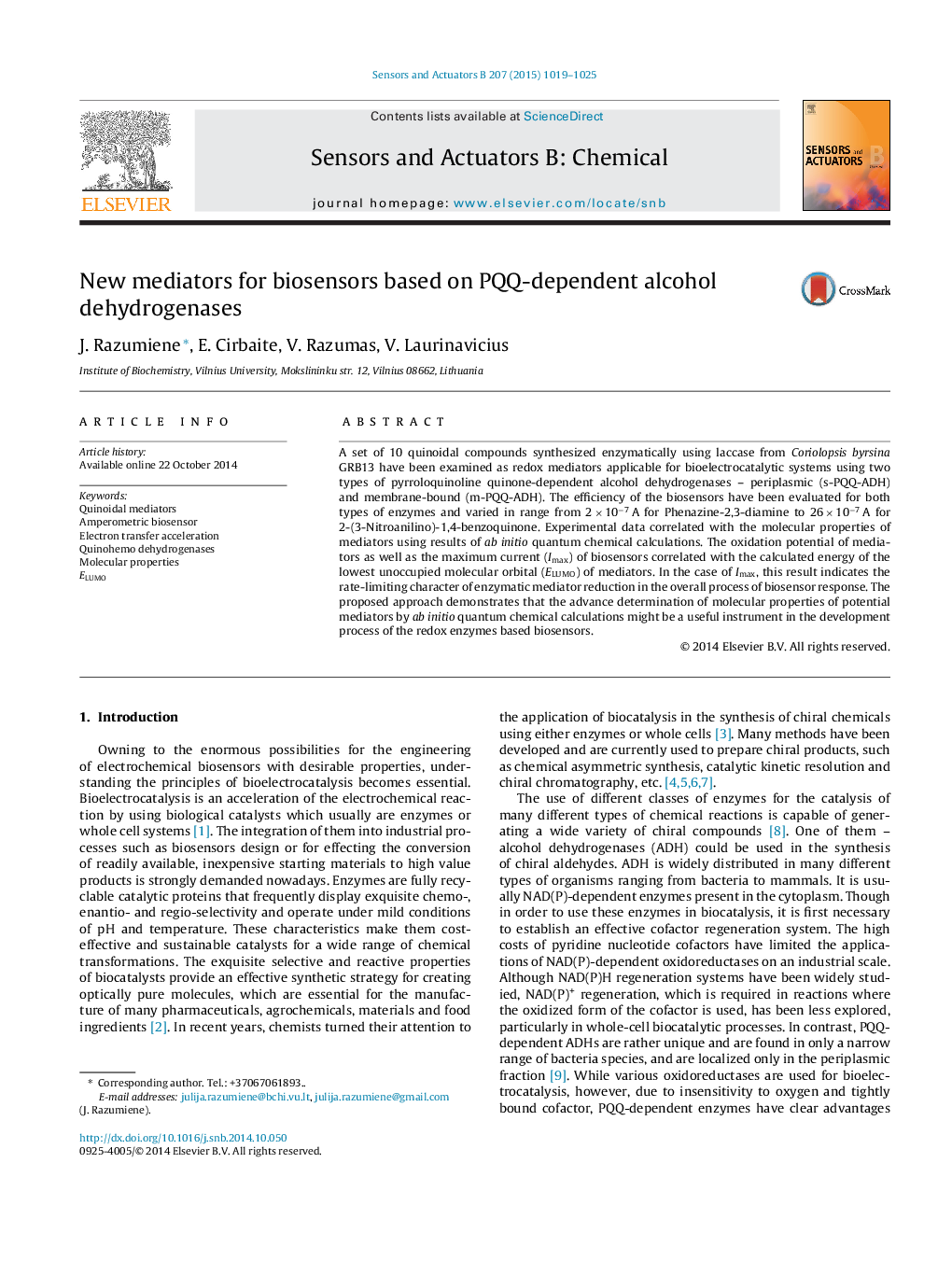| Article ID | Journal | Published Year | Pages | File Type |
|---|---|---|---|---|
| 742523 | Sensors and Actuators B: Chemical | 2015 | 7 Pages |
•Enzymatically synthesized quinones are powerful redox mediators for biosensors.•Epa and Imax of biosensors correlated with the calculated ELUMO of mediators.•Ab initio quantum chemical calculations are beneficial in biosensors development.
A set of 10 quinoidal compounds synthesized enzymatically using laccase from Coriolopsis byrsina GRB13 have been examined as redox mediators applicable for bioelectrocatalytic systems using two types of pyrroloquinoline quinone-dependent alcohol dehydrogenases – periplasmic (s-PQQ-ADH) and membrane-bound (m-PQQ-ADH). The efficiency of the biosensors have been evaluated for both types of enzymes and varied in range from 2 × 10−7 A for Phenazine-2,3-diamine to 26 × 10−7 A for 2-(3-Nitroanilino)-1,4-benzoquinone. Experimental data correlated with the molecular properties of mediators using results of ab initio quantum chemical calculations. The oxidation potential of mediators as well as the maximum current (Imax) of biosensors correlated with the calculated energy of the lowest unoccupied molecular orbital (ELUMO) of mediators. In the case of Imax, this result indicates the rate-limiting character of enzymatic mediator reduction in the overall process of biosensor response. The proposed approach demonstrates that the advance determination of molecular properties of potential mediators by ab initio quantum chemical calculations might be a useful instrument in the development process of the redox enzymes based biosensors.
